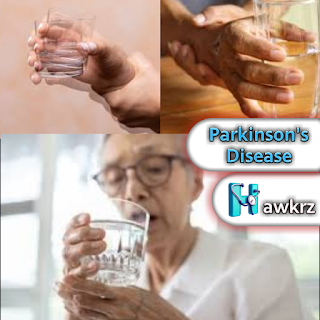Parkinson's Disease (PD) is a neurodegenerative disorder that gradually impairs movement and coordination. This article explores the multifaceted aspects of Parkinson's, including its symptoms, underlying causes, and the diverse range of treatment options available to manage this challenging condition.
Symptoms
Parkinson's Disease manifests through a constellation of symptoms, which often develop gradually over time. The cardinal signs of PD include:
1. Tremors: Involuntary shaking or trembling, typically starting in the hands. Tremors at rest are a classic feature of Parkinson's.
2. Bradykinesia: Slowness of movement, making simple tasks more time-consuming and challenging.
3. Muscle Rigidity: Stiffness of muscles, leading to discomfort and restricted range of motion.
4. Postural Instability: Impaired balance and coordination, increasing the risk of falls.
5. Changes in Handwriting: Known as micrographia, where handwriting becomes smaller and more difficult to read.
Other non-motor symptoms may include sleep disturbances, mood changes, cognitive impairment, and autonomic dysfunction.
Causes
The exact cause of Parkinson's remains elusive, but a combination of genetic and environmental factors is believed to contribute to its development. Genetic mutations, while accounting for a small percentage of cases, play a role in some familial forms of PD. However, the majority of cases are considered sporadic, with no clear hereditary pattern.
Environmental factors such as exposure to certain toxins, head injuries, and viral infections have also been implicated in the onset of Parkinson's. Changes in the brain's structure and function, particularly the loss of dopamine-producing neurons in the substantia nigra, are central to the disease's pathology.
Diagnosis and Progression
Diagnosing Parkinson's Disease is primarily based on clinical symptoms and medical history. There is no definitive test for PD, so physicians rely on a thorough evaluation of motor and non-motor symptoms. Neuroimaging studies, such as MRI and DaTscan, may be used to rule out other conditions that mimic PD.
Parkinson's is a progressive disorder, and the rate of progression varies among individuals. Stages of Parkinson's are often classified using the Hoehn and Yahr scale, ranging from mild to severe. Early diagnosis is essential for implementing strategies to manage symptoms and improve the overall quality of life for individuals with PD.
Treatment Options
While there is no cure for Parkinson's Disease, various treatment options aim to alleviate symptoms, enhance mobility, and improve overall well-being.
1. Medications: The primary pharmacological approach involves medications that increase dopamine levels in the brain or mimic its effects. Levodopa, a precursor to dopamine, is a common medication prescribed to manage motor symptoms.
2. Deep Brain Stimulation (DBS): In cases where medications alone are insufficient, DBS may be recommended. This surgical procedure involves implanting electrodes in specific brain regions to modulate abnormal neural activity.
3. Physical and Occupational Therapy: Therapeutic exercises and activities help maintain and improve mobility, balance, and coordination.
4. Speech Therapy: Speech and language therapists can assist with communication difficulties that may arise due to Parkinson's-related changes.
5. Lifestyle Modifications: Adopting a healthy lifestyle, including regular exercise, a balanced diet, and adequate sleep, can contribute to overall well-being and potentially slow disease progression.
Research and Future Outlook
Ongoing research in Parkinson's Disease focuses on identifying novel therapeutic targets and exploring disease-modifying treatments. Advances in neuroprotective strategies and gene therapies show promise in slowing the progression of the disease.
Moreover, efforts to unravel the complex interplay of genetic and environmental factors contributing to PD are ongoing. Early detection methods and biomarkers are being investigated to facilitate earlier and more accurate diagnosis.
In conclusion, Parkinson's Disease presents a significant challenge for individuals and their families, impacting various aspects of daily life. While there is currently no cure, a combination of medications, therapies, and lifestyle modifications can significantly improve the quality of life for those affected. Continued research and medical advancements offer hope for more effective treatments and, ultimately, a better understanding of this complex neurodegenerative disorder.










